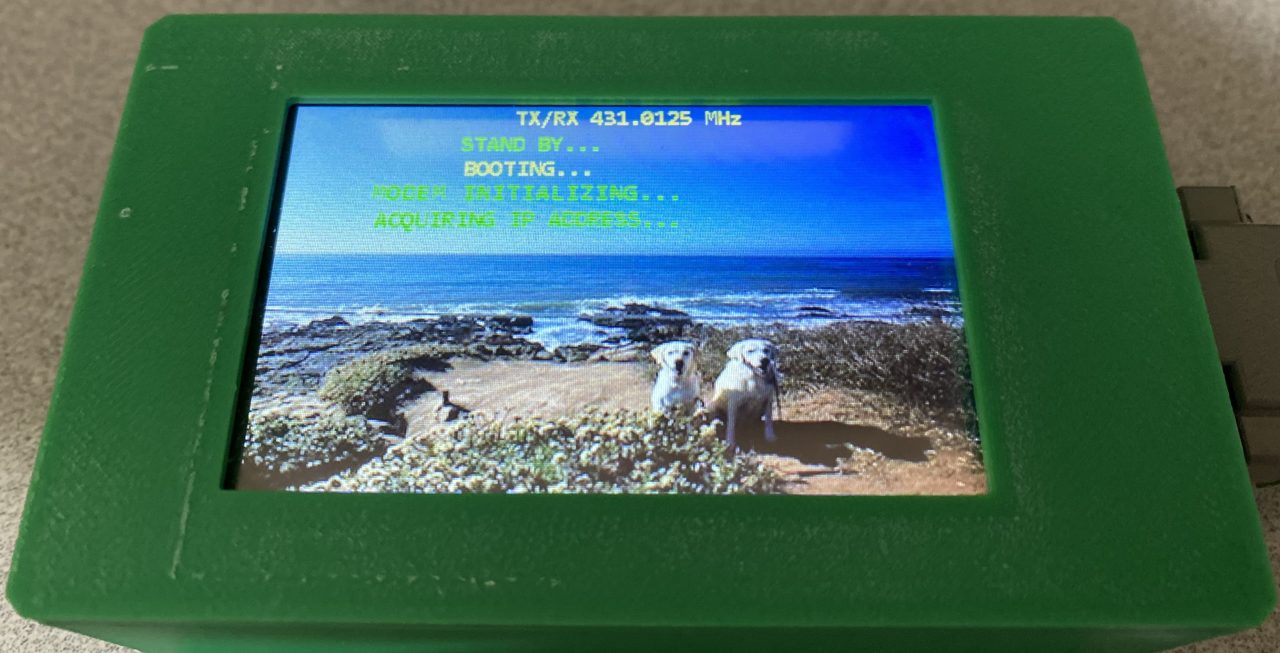
Recently, I built a full duplex repeater that supports FM, Yaesu System Fusion, DMR, and D-STAR all on one frequency pair. Like many SOARA members, I use an MMDVM hot spot for digital modes. My new repeater is essentially a full duplex hot spot using a MMDVM (multi mode digital voice modem) board as the controller. The MMDVM modem board does not have an RF transceiver as it is designed to interface to external transmitter and receiver.
Support for FM was recently added to the MMDVM firmware as well as to the Pi-Star software. The STM32-DVM board even has an LED indicator that lights up when FM is being used.

The repeater consists of two Motorola mobile transceivers and a Repeater Builder STM32-DVM MMDVM board attached to a Raspberry Pi single board computer. I’m using a Raspberry Pi 3A+ board and Wifi for the network connection. The STM32-DVM board and Raspberry Pi are powered through the 9-pin interface connector. A buck converter is attached to the underside of the STM32-DVM board to regulate the voltage down to 5 volts.
The Pi-Star/MMDVM controller can easily be replaced with a Radio Interface board and Debian linux computer running svxLink software to provide the repeater controller function as well as EchoLink.
The radio transceiver signals (Receive Audio, Transmit Audio, COR, and PTT) are accessible via a back panel DB9 connector. Using the “Kantronics” standard adds flexibility to use different controllers. Both the Repeater Builder interface as well as the Masters Communications RA-35 USB Radio Adapter interface use this wiring standard.

The RA-35 is an excellent (and inexpensive) way to interface your radio to a computer via USB.
Using the MMDVM board, this full duplex repeater supports FM, D-STAR, Yaesu System Fusion, and DMR. Only one mode can be operational at a time.
If an FM signal with the right PL tone is received, the MMDVM modem switches to FM mode and repeats the signal like a conventional FM repeater. Repeater ID is sent every 10 minutes when there is FM activity. If another mode is heard, the repeater will switch to that mode, for example DMR.
Balancing the usage of different modes can be tricky. Depending on the usage level of each mode of operation, there may be conflicts. If you would like to try out the repeater, it is currently co-channeled with our low-level 445.660 repeater. PL 123 for FM. For DMR users, I need to configure your DMR ID into the access control list. YSF is currently connected to the Parrot room so you can test your audio. D-STAR is connected to REF088C.






- Repeater System Components
- Transmitter – Motorola GM380 UHF mobile transceiver, 20 watts output
- Receiver – Motorola CDM-750 UHF mobile transceiver
- Interface board – Repeater Builder STM32-DVM
- Computer – Raspberry Pi 3A+ with Nextion 3.2″ display in custom 3D case
- Duplexer – A “Flat pack” 6 cavity band reject duplexer provides isolation between transmit and receive
- Antenna – Comet CX-333 up 25 feet
- Enclosure – A discarded Tivo was used to enclose the repeater components


Leave a Reply